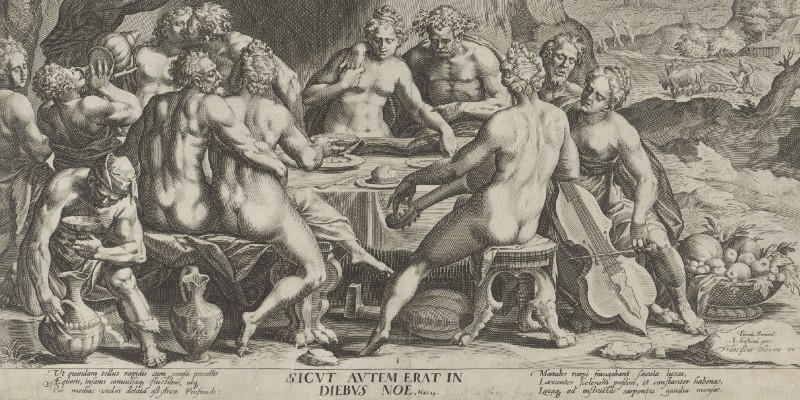Serving Sin: How dining depicts good and evil

- Date
- 6 December 2021 - 6 March 2022
- Location
- Online
Have you considered how dining can reveal imposed moral codes?
Join us in exploring how moral messages were conveyed through art in order to discover the deeper role dining has in our daily lives.
This exhibition explores the significance of dining by demonstrating its importance in depicting moral codes through art.
Curated by MA students from the University of Leeds — and inspired by the Rijksmuseum collections — Serving Sin presents a selection of artworks featuring people eating together, ranging from the 16th to the 19th century, that address various moral themes.
From the birth of sin and temptation in the story of Adam and Eve to bountiful and boastful tables of the rich and powerful, this exhibition uncovers themes of gluttony, wealth, class and community. These paintings depict that good and celebratory behaviour can quickly descend into evil in everyday life which reveals how dining is the ordinary yet significant ritual we all recognise.
Especially in the post-pandemic world, we realise how eating together is a vital social activity that plays an important role in daily life.
Join the exhibition with us. Question how judgements on moral behaviour have changed and see how you fit into the world of ’sin’!
Visit the online exhibition
Serving Sin: How dining depicts good and evil is part of a wider series of exhibitions and projects undertaken by MA students from the School of Fine Art, History of Art and Cultural Studies as part of an Interpretations course module.
Image
Detail from Sinful Mankind before the Flood, 1601 - 1636, Johann Sadeler (I), after Dirck Barendsz. Engraving, 34.8x44.8cm. Rijksmuseum Collection. CC0 1.0 Universal (CC0 1.0). Public Domain Dedication.
